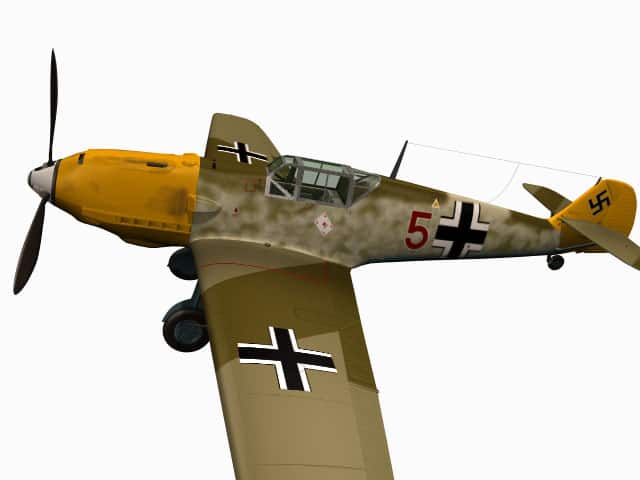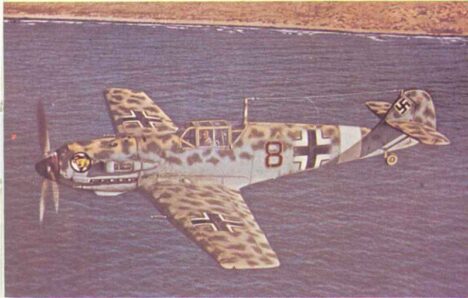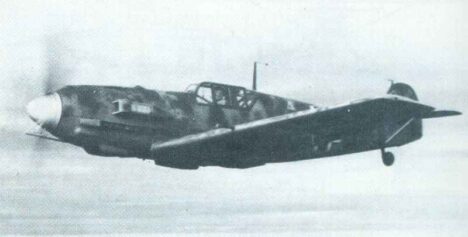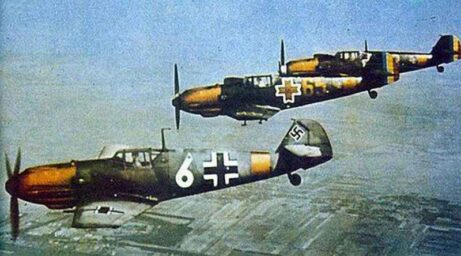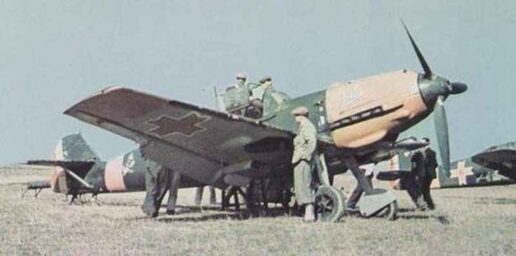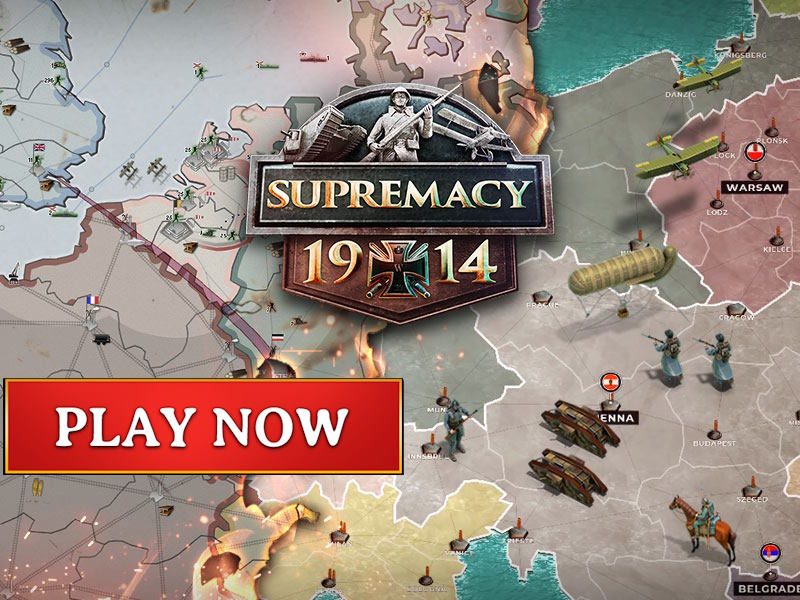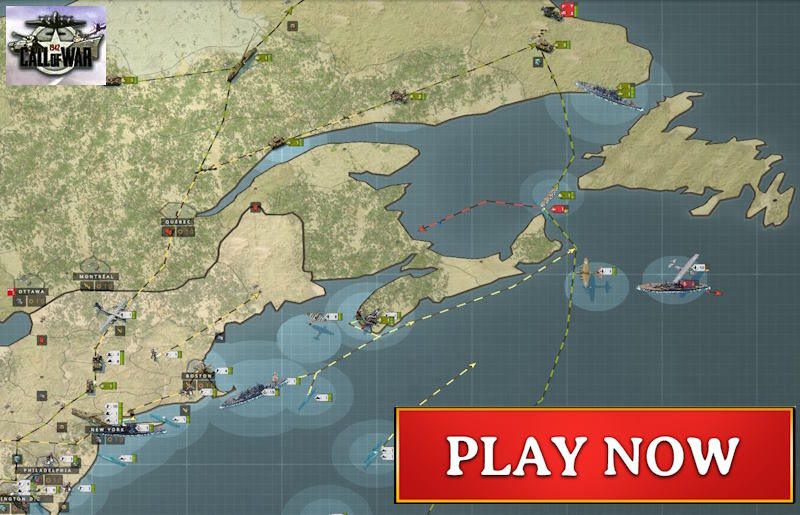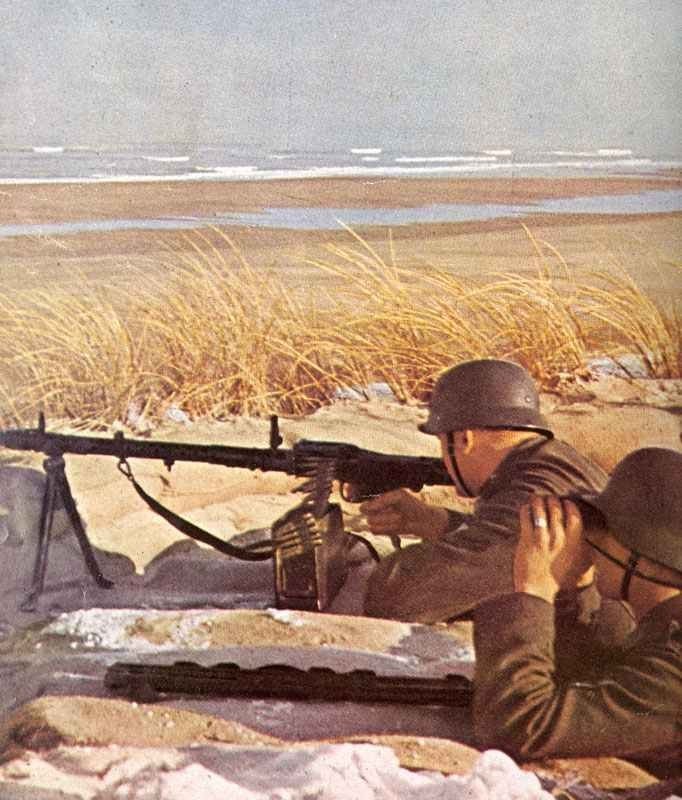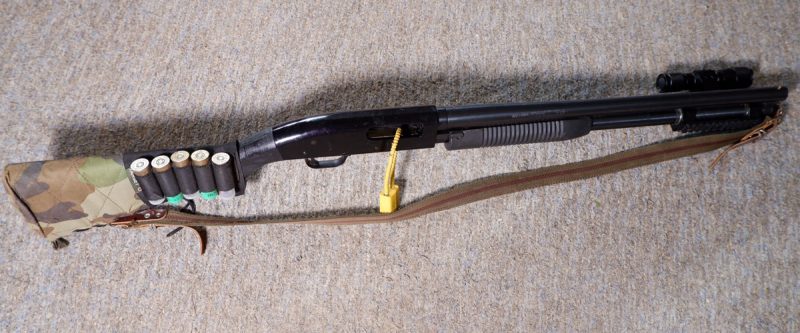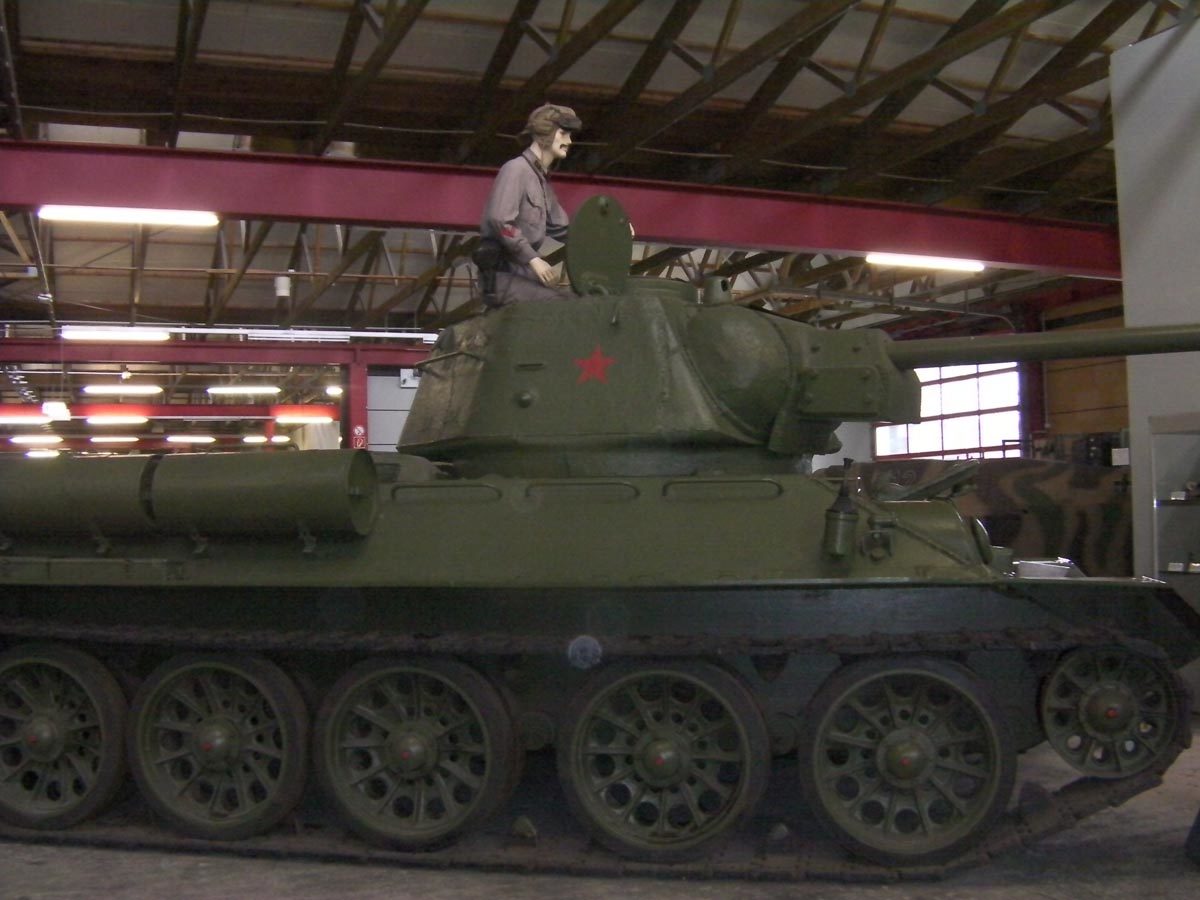German Messerschmitt Emil fighter from the Blitzkrieg and Battle of Britain.
History, development, service, specifications, pictures and 3D model.
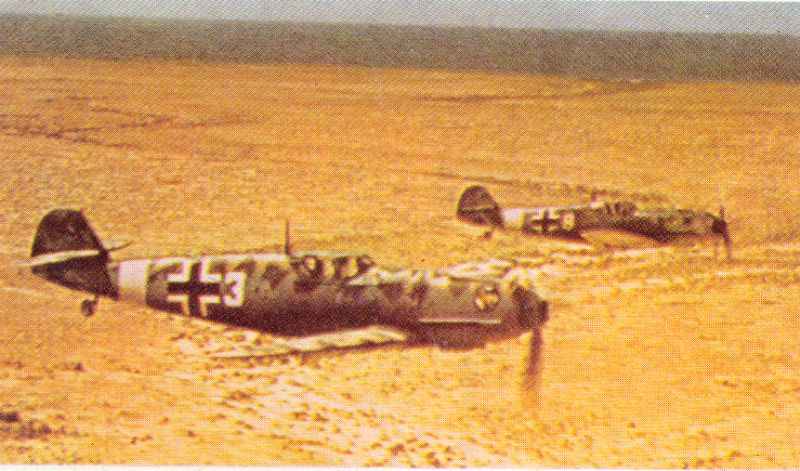
Me 109 Emil
Table of Contents
Messerschmitt Me 109 E and T
Type: German fighter plane or fighter-bomber from the Blitzkrieg and the Battle of Britain (Bf 109 T carrier plane).
History:
At the outbreak of WW2 the Luftwaffe had a strength of 1,056 Bf109s. Many of these were Bf 109 Ds, but this series was already being replaced in increasing numbers by the Messerschmitt Bf 109 E.
This had first appeared (as the V14) in mid-1938, and the E-1 was produced both as a fighter (with four MG 17s) and as a fighter-bomber (carrying one 250 kg or four 50 kg bombs). Later E-1s standardized on 20 mm MG FF cannon in place of the two wing-mounted MG 17s.
Against all types of opposing fighter during the Blitzkrieg throughout Poland, Norway, France, Belgium, Holland and southern England, except for the Spitfire (which it greatly outnumbered), the Messerschmitt Bf 109E proved itself superior in both performance and maneuverability; only its range let it
down.
Production accelerated to the extent that Germany could afford to export substantial numbers of the Messerschmitt Bf 109 E-3 (which appeared at the end of 1939 and was the principal version to be used in the Battle of Britain) to Bulgaria, Hungary, Japan, Romania, Slovakia, Switzerland, Russia and Yugoslavia. In addition, a small batch was built during 1941-43 by Dornier’s Altenrhein factory in Switzerland.
In July 1940 the Gerhard Fieseler-Werke began to convert 10 Bf 109 E-1s to Bf 109T (for Träger = carrier) extended-span configuration. These were to have been development aircraft for the Bf 109 T-1, intended for use aboard the proposed aircraft carrier Graf Zeppelin, but after the carrier program was terminated the 60 T-1s ordered were completed instead as land-based T-2s.
Various other E models, up to E-9, were produced for fighter or reconnaissance duties, with power plant or equipment variations.
Meanwhile, Messerschmitt had been developing what was to become the finest of all the many versions, the Me 109 F.
Users: Germany, Bulgaria, Hungary, Japan, Romania, Slovakia, Switzerland, Russia, Yugoslavia (Bf 109 E and T).
Pictures of Me 109 E
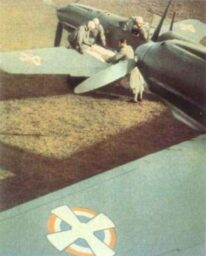
Specifications for Messerschmitt Bf 109 E-3
Specifications:
| Type | fighter |
|---|---|
| Power plant | one 1,175 hp Daimler Benz DB601Aa inverted-vee-12 liquid-cooled engine |
| Accommodation | 1 |
| Wing span | 32 ft 4.6 in |
| Length overall | 28 ft 4.2 in |
| Height overall | 10 ft 6.0 in |
| Wing area | 176.53 sq/ft |
| Weight empty equipped | 4,685 lb |
| Weight loaded | 5,875 lb |
| Maximum wing loading | 33.28 lb/sq ft |
| Maximum power loading | 5.00 lb/hp |
| Maximum speed | 348 mph |
| at height | 14,565 ft |
| Cruising speed | 233 mph |
| at height | 22,965 ft |
| Initial climb | 3,100 ft/min. |
| Time to height | 16,405 ft in 7.1 min. |
| Service ceiling | 34,450 ft |
| Range | 410 miles |
Armament:
| Messerschmitt Bf 109 E-3 | specification |
|---|---|
| above engine | two 7.92mm MG 17 machine guns [1,200 rpm, velocity 2,477 ft/sec] each with 1,000 rounds |
| in wings | two 20mm MG FF [540 rpm] each with 60-round drum |
| bomb load | as fighter-bomber four 110 lb bombs or one 551 lb bomb |
´
Service statistics:
| Messerschmitt Bf 109 E-3 | figures |
|---|---|
| First flight | mid 1938 |
| Production delivery | January 1939 (E-1), end of 1939 (E-3) |
| Price per unit | 100,000 RM = $ 45,000 = £ 11,250 |
| Total production figure (all) | 35,000+ (of these 30,480 during WW2) |
| Accepted by Luftwaffe 1/39-12/44 | 29,350 |
| Production 1939 (all variants) | 449 |
| Production 1940 (all variants) | 1,693 |
| Production 1941 (all variants) | 2,764 |
| Bf 109's in Luftwaffe First Line Units 1.9.39 (Start of WW2) | 850 Me109 E-1 and E-1/B, 235 D-1, unknown small number of B's (200 used against Poland) |
| Bf 109 E losses in Poland | 67 (all by ground fire) |
| Bf 109 E in Luftwaffe First Line Units 10.8.40 (Start Battle of Britain) | 879 Bf 109 E |
Animated 3D model of Messerschmitt Bf 109 E
References and literature
Luftkrieg (Piekalkiewicz)
The Encyclopedia of Weapons of World War II (Chris Bishop)
Combat Aircraft of World War II (Bill Gunston)
Technik und Einsatz der Kampfflugzeuge vom 1. Weltkrieg bis heute (Ian Parsons)
Das große Buch der Luftkämpfe (Ian Parsons)
Luftkrieg (Piekalkiewicz)
Flugzeuge des 2. Weltkrieges (Andrew Kershaw)
German Aircraft of World War 2 in Colour (Kenneth Munson)
Warplanes of the Luftwaffe (David Donald)
The Luftwaffe Album, Bomber and Fighter Aircraft of the German Air Force 1933-1945 (Joachim Dressel, Manfred Griehl)
Luftwaffe Handbook (Dr Alfred Price)
Die Schlacht um England (Bernard Fitzsimons, Christy Campbell)
Kampfflugzeuge (Bill Gunston)
Operation Barbarossa: the Complete Organisational and Statistical Analysis, and Military Simulation, Volume I – IIIB (Nigel Askey)


